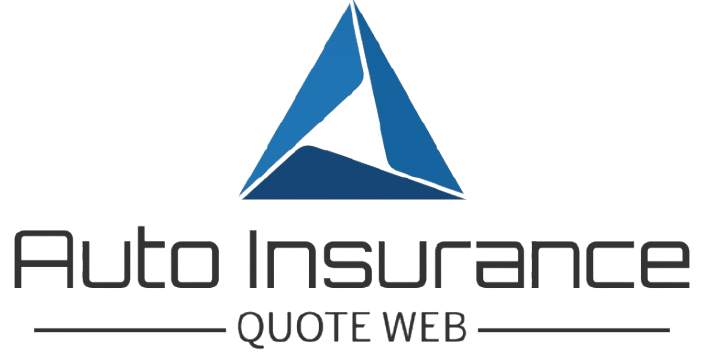Demystifying Liability Coverage: Choosing the Right Policy
Insurance can be a complex and overwhelming topic for many individuals and businesses. Among the myriad of coverage options available, liability insurance stands out as a crucial component to protect against unforeseen risks and legal liabilities. Whether you’re a small business owner, a homeowner, or simply looking to safeguard your assets, understanding how to choose the right liability coverage is essential.
In this in-depth guide, we will explore the intricacies of liability coverage, discuss the factors to consider when selecting a policy, and provide you with the knowledge to make informed decisions. From the basics of liability insurance to advanced considerations, this article aims to demystify the world of coverage options and help you navigate the complex landscape of risk management.
The Basics of Liability Coverage

Liability coverage is a type of insurance that protects policyholders from financial losses resulting from claims or lawsuits filed against them for bodily injury or property damage. In essence, liability insurance provides financial protection in the event that you are found legally responsible for causing harm to others. This can include situations such as a slip-and-fall accident on your property, a car accident where you are at fault, or a product defect that leads to injury.
There are several types of liability coverage, each tailored to specific needs and risks. The most common forms include:
General Liability Insurance
General liability insurance is a broad coverage that protects against a wide range of potential liabilities, including bodily injury, property damage, and advertising injury. This type of policy is essential for businesses of all sizes and industries, as it provides protection against common risks that can arise in the course of operations.
For example, if a customer slips and falls in your store and sustains an injury, general liability insurance can cover the medical expenses and potential legal fees associated with the incident. Similarly, if a product you sell causes harm to a consumer, your policy can help mitigate the financial repercussions of a lawsuit.
Professional Liability Insurance
Professional liability insurance, also known as errors and omissions (E&O) insurance, is designed to protect businesses and individuals in professional service industries from claims of negligence or inadequate work. This type of coverage is crucial for professions such as doctors, lawyers, consultants, and other service providers who may be sued for errors or omissions in their work.
For instance, if a client alleges that your advice led to financial losses or that your services were inadequate, professional liability insurance can help cover legal defense costs and potential settlements. Without this coverage, professionals risk facing significant financial consequences in the event of a lawsuit.
Product Liability Insurance
Product liability insurance is specifically designed to protect businesses that manufacture, distribute, or sell products against claims of harm caused by their products. In today’s litigious society, product liability coverage is essential for companies that produce goods, as even a minor defect can lead to costly lawsuits.
For example, if a toy manufacturer’s product contains a choking hazard that leads to injury or death, product liability insurance can help cover the costs of recalls, legal defense, and potential settlements. Without this coverage, businesses risk financial ruin from product-related claims.
Factors to Consider When Choosing Liability Coverage
When selecting the right liability coverage for your needs, there are several key factors to consider to ensure you have adequate protection. By evaluating these factors carefully, you can tailor your policy to mitigate specific risks and safeguard your assets effectively.
Risk Exposure
One of the most critical factors to consider when choosing liability coverage is your risk exposure. Assessing the nature of your business, the industry you operate in, and the potential risks you face can help you determine the level of coverage you need. High-risk industries such as construction, healthcare, and hospitality may require higher coverage limits to protect against costly claims.
Additionally, consider the specific risks inherent to your business operations. For example, a restaurant owner may face different liability risks than a software developer. By identifying your unique risk factors, you can tailor your coverage to address potential liabilities effectively.
Coverage Limits
Another crucial consideration when choosing liability coverage is the policy limits offered by the insurer. Coverage limits determine the maximum amount the insurance company will pay for a covered claim, including legal defense costs and settlements. It’s essential to select coverage limits that adequately protect your assets and mitigate potential financial losses.
When determining coverage limits, consider the value of your assets, the potential costs of legal defense, and the severity of claims that may arise. While higher coverage limits typically come with higher premiums, underinsuring yourself can leave you vulnerable to significant financial risks in the event of a lawsuit.
Deductibles
Like other forms of insurance, liability coverage often includes a deductible, which is the amount you must pay out of pocket before your insurance coverage kicks in. When choosing a policy, consider the deductible amount and how it aligns with your financial capabilities. A higher deductible can lower your premiums but may require you to pay more upfront in the event of a claim.
Evaluate your risk tolerance and financial situation when selecting a deductible. If you have sufficient savings to cover a higher deductible, opting for a lower premium may be advantageous. However, if a high deductible would strain your finances, it may be more prudent to choose a lower deductible with higher premiums.
Policy Exclusions
It’s essential to review the policy exclusions of any liability coverage you are considering to understand the limitations of your coverage. Exclusions are specific scenarios or risks that are not covered by the policy and may leave you vulnerable to financial losses if they occur.
Common exclusions in liability policies include intentional acts, criminal behavior, and certain types of professional errors. By familiarizing yourself with the exclusions of your policy, you can take steps to mitigate these risks or explore additional coverage options to fill potential gaps.
Claims History
Your claims history can also impact your ability to secure affordable liability coverage. Insurers may review your past claims, including the frequency and severity of incidents, to assess your risk profile and determine your premiums. A history of frequent claims or high-dollar settlements may result in higher premiums or difficulty obtaining coverage.
When applying for liability insurance, be prepared to provide information about your claims history, including any past lawsuits, settlements, or claims filed against you. By maintaining a clean claims record and implementing risk management strategies to reduce future incidents, you can improve your insurability and potentially lower your premiums.
Legal Requirements
In some cases, liability coverage may be legally required for certain businesses or professions. For example, many states mandate that businesses carry general liability insurance to operate legally. Additionally, professional service providers such as doctors, lawyers, and real estate agents may be required to maintain professional liability coverage to practice in their respective fields.
Before selecting a liability policy, research the legal requirements in your industry and location to ensure compliance. Failing to carry the necessary insurance coverage can result in fines, penalties, or even the suspension of your business operations. By understanding the legal obligations related to liability insurance, you can avoid legal pitfalls and protect your livelihood.
Industry Standards
Lastly, consider industry standards and best practices when choosing liability coverage. In some industries, certain types of coverage may be customary or even expected to do business. For example, contractors may be required to carry specific types of liability insurance to bid on projects, while healthcare providers may need malpractice coverage to practice medicine.
By staying informed about industry standards and consulting with peers or industry associations, you can ensure that your liability coverage meets the expectations of your clients, partners, and stakeholders. Aligning your coverage with industry norms can enhance your credibility and protect your reputation in the marketplace.
Expert Opinions
We reached out to industry experts for their insights on choosing the right liability coverage. According to John Smith, a seasoned insurance broker, “When selecting liability coverage, it’s crucial to work with a knowledgeable agent who understands your unique risks and can tailor a policy to meet your needs. A one-size-fits-all approach rarely provides adequate protection against the complexities of modern business risks.”
Similarly, Sarah Johnson, a legal consultant specializing in risk management, advises, “Don’t underestimate the importance of reviewing your policy regularly and adjusting your coverage as your business evolves. As your operations grow and your risks change, your liability coverage needs to adapt to ensure you are adequately protected.”
Common Misconceptions
There are several common misconceptions about liability coverage that can lead individuals and businesses to make uninformed decisions. One prevalent misconception is that liability insurance is only necessary for large corporations or high-risk industries. In reality, liability coverage is essential for businesses of all sizes and sectors to protect against unforeseen risks.
Another misconception is that liability insurance is a one-time purchase that remains static over time. Policies need to be reviewed periodically to ensure they align with your current risk profile and coverage needs. Failing to update your coverage can leave you exposed to new liabilities that may not be covered under your existing policy.
Conclusion
Choosing the right liability coverage is a critical decision that can have far-reaching implications for your financial security and peace of mind. By understanding the basics of liability insurance, evaluating key factors such as risk exposure, coverage limits, and deductibles, and staying informed about industry standards and legal requirements, you can make informed choices that protect your assets and mitigate potential liabilities.
Remember, liability insurance is not one-size-fits-all, and working with a knowledgeable insurance agent or risk management consultant can help you tailor a policy that meets your specific needs. Regularly review your coverage, reassess your risks, and adjust your policy as necessary to ensure you are adequately protected in an ever-changing business landscape.
Whether you’re a small business owner, a contractor, or a professional service provider, the right liability coverage can provide you with the peace of mind to focus on growing your business and serving your clients. Don’t wait until it’s too latetake proactive steps to choose the right liability coverage today and safeguard your future.




